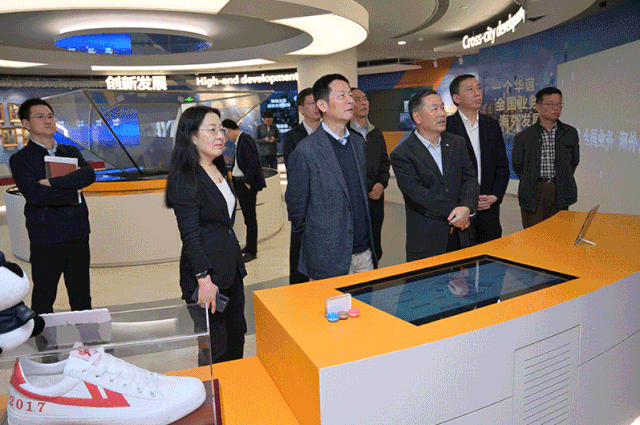
On the afternoon of November 23rd, Wu Qing, Member of the Standing Committee of CPC Shanghai Municipal Committee, visited Shanghai Huayi Group for research on stable growth. The team focused on the exchange of steady growth work of Shanghai Huayi, and hada detailed understanding of its development needs. Chen Mingbo, Secretary General of Shanghai Municipal Government, Zhang Jianming, Vice Chairman of Shanghai Municipal Commission of Economy and Informatization, and Ye Jingsong, Deputy Director of Municipal SASAC, were present. Relevant leaders of Shanghai Huayi Group accompanied the team during the visit, including Secretary of CPC Shanghai Huayi Group, Liu Xunfeng, Chairman of the group, and Wang Xia, CEO of the group.
Mr. Wu visited theexhibition hall and emergency linkage center of Shanghai Huayi Group, and listened to relevant reports. He expressed his gratitude to Shanghai Huayi Group for its important contribution to the prevention and control of COVID-19 and work resumption since the beginning of this year. He also pointed out that Shanghai Huayi Group is a key brand in Shanghai. During the "14th five-year plan" period, it is of great significance for the development of Shanghai's advanced manufacturing industry to continuously promote industrial transformation, build an industry benchmark for intelligent manufacturing in chemical industry, and gradually accumulate experience to form mature teams and standard solutions in intelligent manufacturing and explore new business models for external services.
Shanghai Huayi Group is a large state-owned chemical enterprise group in Shanghai. In May 2016, the core assets of the group were listed as a whole. The group adheres to five development strategies of "green development, innovative development, high-end development, cross city development and integrated development", and forms five core businesses of "energy chemical industry, green tire, advanced materials, fine chemical industry and chemical service". The group has more than 40 factories and production bases in 11 provinces, autonomous regions and overseas.
Division of Economic Operation and Division of New Materials were present.







